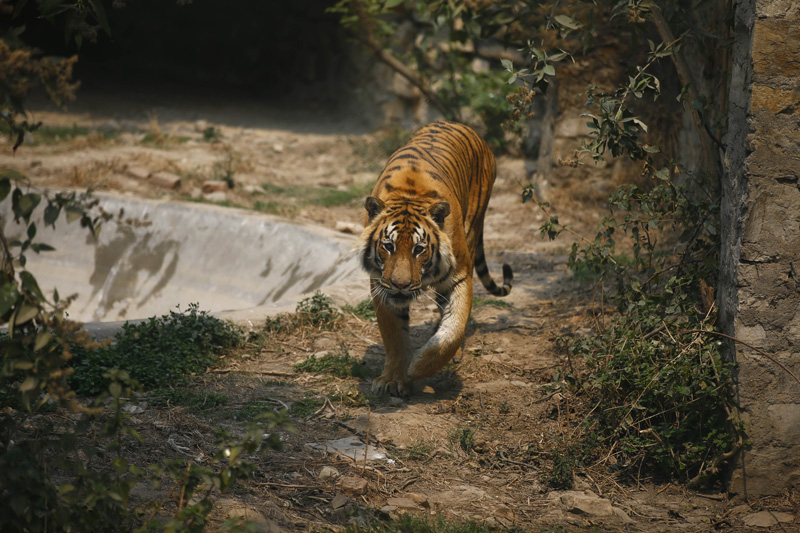Tiger conservation plan made public
Kathmandu, July 29
The government has announced a five-year tiger conservation action plan (2016-2020) with a vision to increase the tiger population to 250 by 2022.
The 2013 census had put the tiger population at 198. The Department of National Parks and Wildlife Conservation made public the action plan coinciding with the Global Tiger Day, 2016 being marked today.
According to the action plan, the DoNPWC will be tasked with looking after the tigers in national parks and wildlife reserves, while the Department of Forest will conserve the endangered big cats wandering in the forested areas and community forests.
The engagement of DoF and district forest offices is expected to give a boost to conservation of tigers and their habitat. The idea of giving a participatory role to the DoF comes in the wake of growth in tiger population and rise in poaching activities in community and government-managed forests.
The action plan has estimated the annual cost of tiger conservation programme at up to Rs 300 million. The cost also involves technology development, construction of physical infrastructure and capacity development for scientific research.
The action plan was developed in consultation with WWF Nepal, National Trust for Nature Conservation, Zoological Society of London, experts and other stakeholders. Earlier, the government had been working on conservation of tiger, its prey species and habitat under the National Tiger Recovery Programme (2015-2015). The programme was aimed at fulfilling Nepal’s commitment to doubling the tiger population by 2022.
In 2009, Nepal had signed ‘St Petersburg Declaration on Tiger Conservation’ to express commitment to double the number of wild tigers from 121 to 250 by 2022. In 2013, tiger population in Nepal stood at 198, a remarkable achievement from 2010 when the number of wild cats was only 121.
The action plan will focus on expanding tiger habitat and grasslands for prey species, reducing human-wildlife conflict and strengthening Nepal Police and customs department, while managing wetlands and controlling poaching and illegal trade of animal parts. It has also placed emphasis on local people’s role in tiger conservation.
As there is frequent movement of tigers to and from Nepal and India, the government plans to carry out tiger census in national parks and protected areas of the two neighbouring countries simultaneously in 2018 by using the same technology to make the tiger statistics reliable and scientific.
Authorities of both sides have informed that there had been poaching of at least 14 tigers in national parks and protected areas of Nepal and India during the period of January 2015-February 2016.






